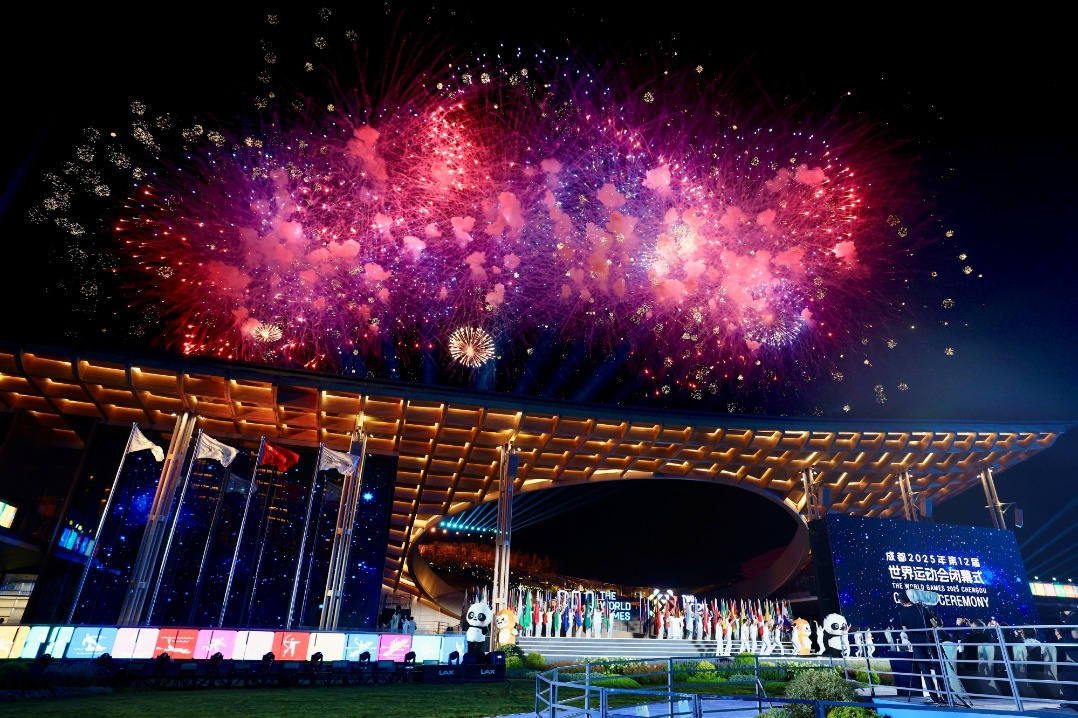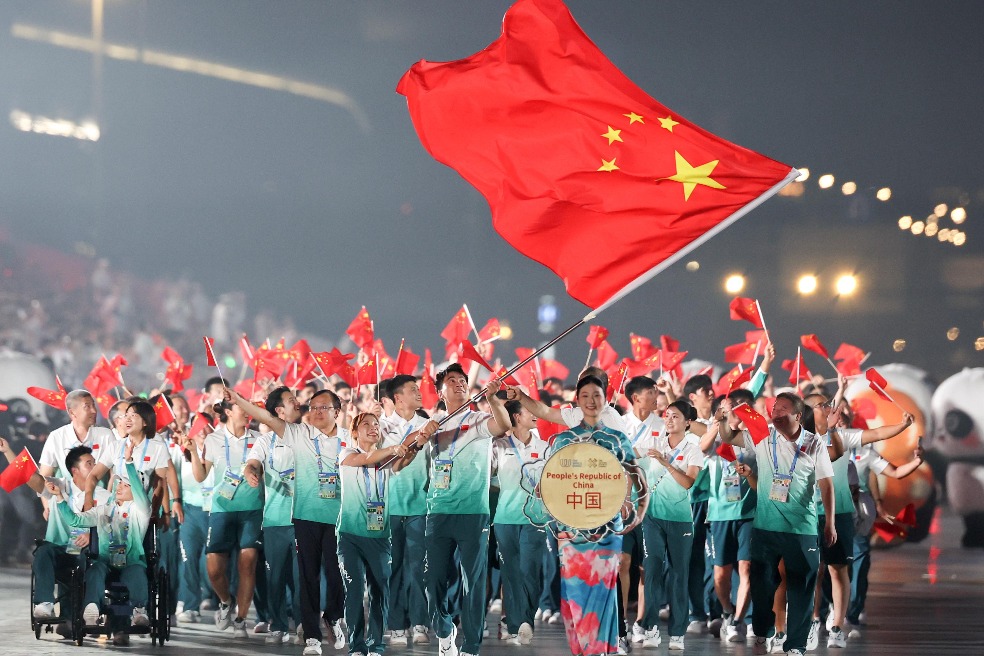Taoist temple exercise helps city workers relieve stress
Serene place of worship eases burden on body, mind


Young white-collar workers in Beijing can easily find themselves frazzled by the pressure of their day-to-day jobs and the fast pace of city life.
A Taoist temple located in the Chinese capital's downtown Xicheng district, however, is providing an oasis of serenity for young residents to relieve their aches and pains, ease their nerves, and find inner calm.
The courtyards of Baiyun Temple are shaded by towering trees and filled with the aroma of burning incense. Priests can be encountered everywhere at the temple — a living reminder of the historical significance of Taoism in China and its importance to believers.
An exercise known as baduanjin, a form of Taoist qigong that combines a set of eight traditional Chinese fitness movements with meditation and breathing, has been taught on weekends by priests for many years, attracting enthusiastic trainees.
Deng Jiayi, 30, is one of the instructors, and has been teaching baduanjin since 2017.
"We have found that the physical condition of people today is different from that of the past. Many people now are unable to learn martial arts or tai chi because their physical health is poor," Deng said. "Therefore, our master suggested using some health preservation exercises for the public to learn and improve, and baduanjin became the exercise offered as a public welfare class at the temple.
"Our master's wish is to promote our traditional Chinese culture, to let more people know about the profound culture so that they can benefit from it," said Deng.
The baduanjin exercise classes, held from 9:30 am to 11:00 am every Saturday and Sunday, offer two courses. They are taught by Taoist instructors who have studied martial arts from an early age at the country's most-sacred site of Taoism, Wudang Mountain in Hubei province.
Initially a set of qigong exercises practiced by Chinese folk groups, baduanjin has evolved since ancient times. Inferior elements of the exercise were discarded while the remaining ones were refined, leading to the practice of baduanjin in its current form.
Different schools and styles of martial arts, as well as qigong, have incorporated these techniques into their own systems, further boosting the spread of baduanjin.
Deng said the Sanfeng branch of Wudang baduanjin focuses on breathing and health preservation, while the Shaolin sect practices a more forceful and externalized style, which emphasizes muscle and internal strength.
Baiyun Temple teaches a style of the exercise derived from the Huashan branch of the Taoist Quanzhen sect, with a focus on the regulation and flow of qi, a vital life energy, and blood.
Improving fitness
Over the past seven years, the baduanjin courses offered by Baiyun Temple have changed in their intensity, while interaction with the public has evolved.
Since the end of the COVID-19 pandemic, there's been a surge in young people interested in exercises to improve their health, Deng said. This increase has been achieved with the help of government support, he added.
However, some baduanjin novices struggle to complete even one round of training, he said. "During our classes, we noticed students experiencing dizziness, nausea, and difficulty standing up," Deng explained. "To prevent fainting or hypoglycemia, we provide huoxiangzhengqi water (a traditional herbal formula) and glucose."
Deng attributed the struggles of novice students to declining overall fitness levels and the teaching methods, which are challenging for newcomers. "We've since adjusted our approach to be less intense," he said.
Deng believes that many urban residents suffer from physical stress brought on by overthinking. But by practicing baduanjin they stretch and open up all their joints and limbs, and allow their entire bodies to slowly relax. This can calm their minds and provide them with a much-needed feeling of tranquillity, he said.
"During this practice, individuals can engage in self-reflection and gradually reduce stress, discomfort, and excessive mental anxiety," Deng said.
"The things that city residents bring about through social burdens, life and work pressures, can be easily removed through our classes at the temple," Deng said, adding that trainees have been eager to learn and find solutions to relieve their stress.
























